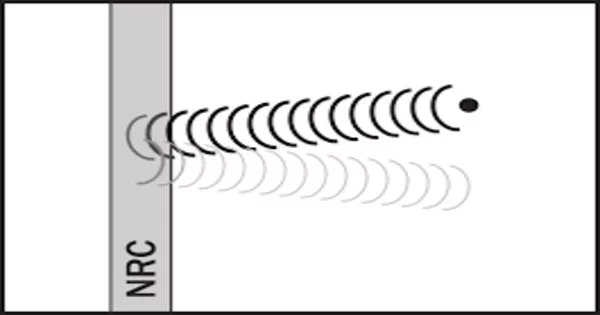The noise reduction coefficient (NRC) is a single-number value ranging from 0.0 to 1.0 that describes a material’s average sound absorption performance. An NRC of 0.0 indicates that the object reflects sound energy rather than attenuating mid-frequency sounds. This is more of a theoretical goal than a physical one: even very thick concrete walls will attenuate sound and may have an NRC of 0.05.
It is commonly used in the field of acoustics to evaluate and compare the sound absorption properties of various building materials such as acoustic panels, ceiling tiles, and wall treatments. The NRC rating ranges from 0 to 1, with higher values indicating better sound-absorbing capabilities. An NRC of 0 indicates that the material reflects all sound (no absorption), whereas an NRC of 1 indicates that the material absorbs all sound that reaches it.
An NRC of 1.0, on the other hand, indicates that the material has an acoustic surface area (in sabin) that is equal to its physical, two-dimensional surface area. This rating is typical of thicker, porous sound-absorbing materials, such as a 2-inch-thick fabric-wrapped fiberglass panel. Materials with NRC values greater than 1.00 are possible. This is a limitation of the test procedure and how acousticians define a square unit of absorption, not a property of the material itself.
Higher NRC values are typically preferred in environments where sound reflection and echo must be controlled, such as concert halls, theatres, recording studios, conference rooms, classrooms, and other spaces where clear communication and minimal noise interference are essential.
To determine a material’s NRC, sound absorption tests are performed in accordance with standardized procedures such as those outlined in ASTM C423 or ISO 354. The material is subjected to sound at various frequencies during these tests, and the percentage of sound absorbed is calculated. The Noise Reduction Coefficient for that material is calculated by taking the average of these absorption coefficients at various frequencies.















